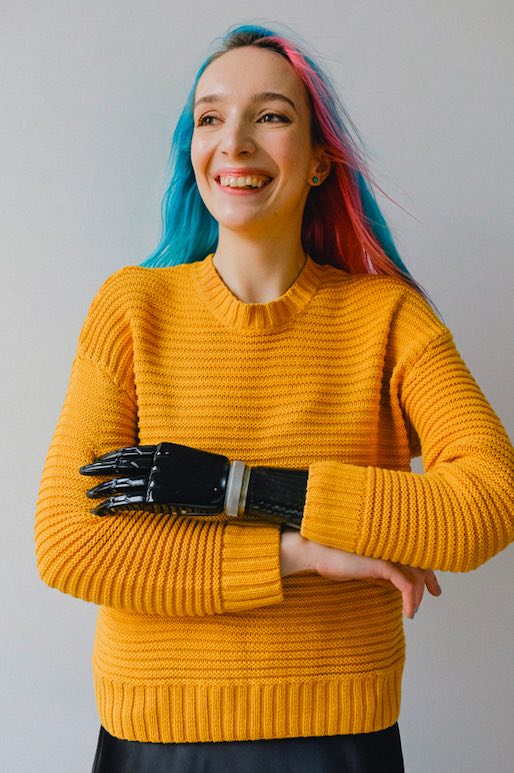Reading Time: ~3 Mins | Written By: Danielle Windecker
We’ve all seen them; from corporate websites to social media, inauthentic stock photos dot the internet, typically depicting variations of white, able bodied, affluent professionals. Many feature more men than women, and if people from underrepresented communities are included, it’s typically in an artificial way.
Think of how many times you’ve seen the obvious examples, like white professionals guiding black people or white men instructing female staff members. Have you also noticed others, like an able-bodied person advising someone with a disability, while resting a hand on their wheelchair?
The demand for stock photography is high, but so is the need for better representation. While more brands are using images that include people of colour or people with disabilities, there is still significant room for improvement.
If you aren’t sure where to acquire diverse, inclusive and equitable stock photos – or why they really matter – consider the following.
They’re More Representative of Real Life

Images featuring a vast range of people are a better depiction of the world we live in. This means more than including a token person of colour or someone in a wheelchair. Various ethnicities, cultures, ages, genders, levels of ability, body types and socio-economic statuses are reality and should be embraced and included.
They Stop the Perpetuation of Harmful Stereotypes
Poor stock photography takes many forms, from a group of business people with one token person of colour in traditional garb while others wear suits, or a disabled staff member using a large, hospital-style wheelchair in an office setting. While some stock images are offensive, the majority depicting under-represented groups are simply inaccurate and perpetuate racist, ableist and overall damaging stereotypes.
They Improve Self Worth

Society overwhelmingly takes cues from visual elements, and lack of representation signals to the public who is and isn’t seen. When stock images include authentic depictions of under-represented identities, it helps improve self worth in those communities.
They Counteract Erasure
Given how frequently stock photography is used online and in print, not taking a wide variety of identities into account is a form of erasure. Just as diverse, inclusive stock photos help improve self worth, using ones that contribute to erasure have the opposite effect. This is commonly referred to as “symbolic annihilation.”
They Broaden Your Audience

Representation is rooted in a very simple idea; that people gravitate towards and respond to seeing others who look like them. It has been proven that using inclusive, equitable stock photography can result in more customers; Google found that 69% of Black consumers are more likely to purchase from brands that positively reflect them, and that number increases to 71% for members of the LGBTQ2S+ community.
While it’s impossible to provide an exhaustive list of everything to consider, here are a few tips to keep in mind when choosing stock photos for your next project:

- Do the images include a variety of people, including different ethnicities, cultures, ages, genders, levels of ability, body types and socio-economic statuses?
- Are people from under-represented groups shown as equals to others in the photos?
- Are white, able bodied people consistently depicted in more authoritative or high-status roles?
- Are people of colour shown in traditional clothing or regalia that is out of context for the image?
- Are people with disabilities shown living life in a way that is natural for the average person?
- Are different types of families and levels of financial well-being included?
- Do the images represent real life – in your business, organization, store and community?
- Have you received feedback from or sought consultation with under-represented groups?
And if you’re not sure where to start searching, there are a number of great resources online, including PUSH Living Photos, Diversity Photos, Women of Colour in Tech, Vice’s Gender Spectrum Collection, Unsplash, Body Liberation Photos and Disabled and Here.
Authenticity is key to choosing great images. By making informed choices, you can counteract bad stock photos and play an active role in equitable representation. As a result, you can also win new audiences for your business!
Stay updated on the latest social media and all things digital marketing by subscribing to our newsletter.
Categories:
Marketing Insights, Marketing Tips



